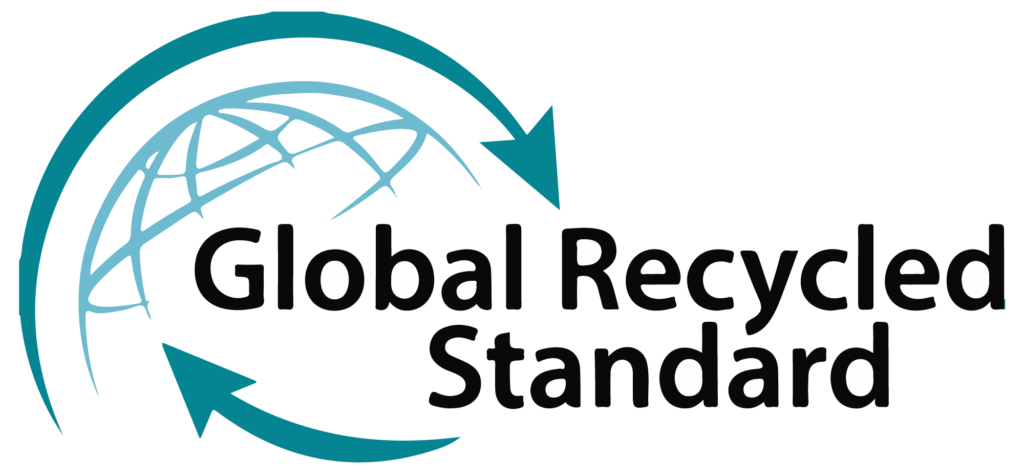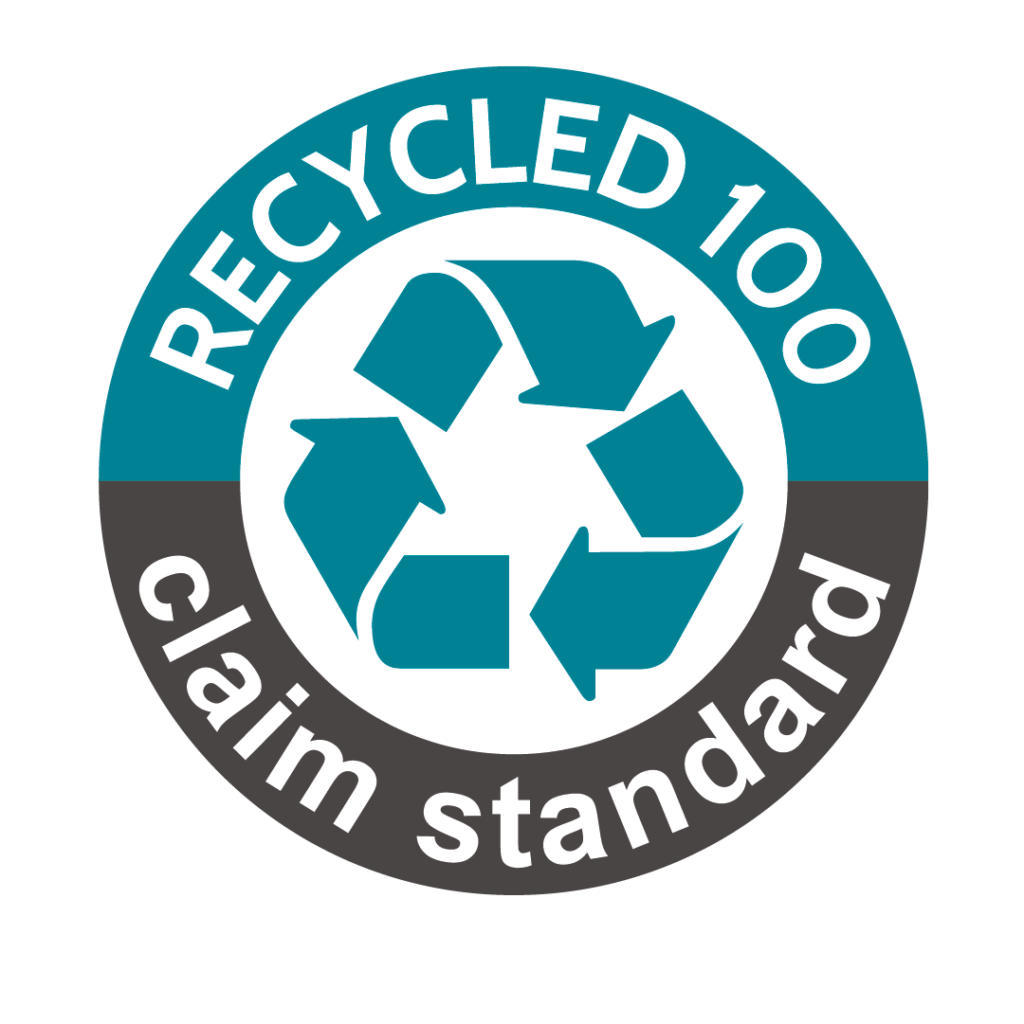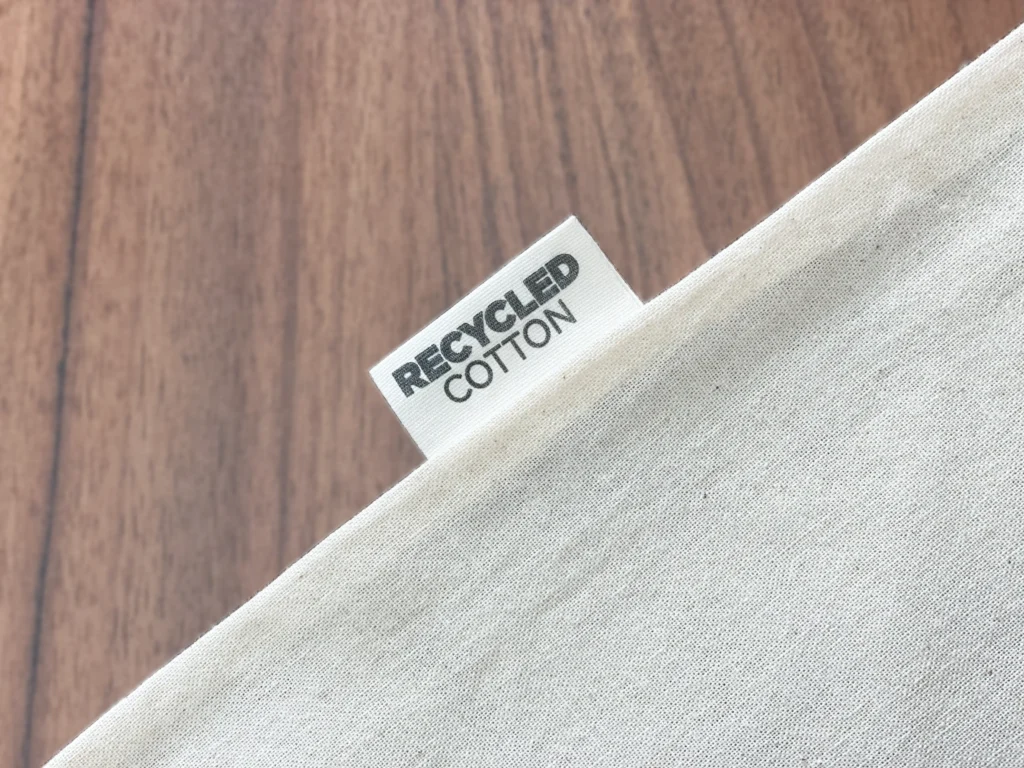Cotton is the most widely used natural fibre in the world. Omnipresent in our wardrobes and appreciated for its comfort – whether conventional or organic – it comes up against ecological issues that are all too often overlooked, prompting us to re-examine our options, particularly with recycled cotton.
When fashion reinvents cotton
Consumers are increasingly aware of the environmental issues involved in cotton production, and are looking for alternatives to conventional cotton and eco-designed products.
It’s against this backdrop that recycled cotton is emerging as an innovative and promising solution. The idea is simple: recover production off-cuts (pre-consumer) or used clothes (post-consumer), then give them a second life in the form of new cotton yarns. Not only does this process limit textile waste, it also reduces the consumption of natural resources (water, agricultural land, energy).
Understanding recycled cotton
The transformation of conventional cotton into recycled cotton involves defibration, spinning and weaving a new cotton yarn. After these various stages, the fibres are naturally shortened, which can reduce their strength and elasticity. This is why, in the majority of cases, recycled cotton must be combined with other materials such as cotton (conventional, organic, in conversion) or polyester to compensate for this fragility and guarantee the quality of the finished product.
The different labels

– GRS (Global Recycled Standard). It certifies that a product contains at least 50% recycled fibre and also verifies compliance with environmental and social criteria throughout the supply chain.

– RCS (Recycled Claim Standard). More focused on traceability, it precisely certifies the recycled content (from 5%). Ideal for checking that a textile contains the declared amount of recycled cotton.
The cotton match: conventional, organic or recycled?
The choice between conventional, organic or recycled cotton depends above all on the priorities and constraints of each project.
- Conventional cotton remains a mainstay of the textile industry thanks to its wide availability and often more affordable cost. Despite its significant environmental impact, the industry is making constant progress to optimise its practices, in particular by reducing the use of chemicals.
- Organic cotton, for its part, is appealing because of its cultivation methods, which are more respectful of the land and its producers, even though it can still consume a lot of water and cost more because of the low production volumes.
- Organic cotton in conversion, which is becoming increasingly common on the market, refers to cotton grown on agricultural plots in transition to organic farming. By choosing in-conversion cotton, you are supporting farmers who are making the effort to change their farming practices, which are often demanding and costly at the outset.
- Lastly, recycled cotton meets a sustainability challenge by limiting the extraction of new resources, while offering a strong marketing argument: the circular economy. However, because recycled cotton fibres are naturally shorter, they cannot be used to make the same textiles as non-recycled cotton.

In short, the « best » cotton varies according to the specifications, the budget and the ecological values defended.
Case studies: products that combine style and eco-responsibility
While it is not yet possible to make everything from recycled cotton, it is already widely used, particularly when mixed with other fibres.
For example, the Re Crusader T-shirt from Sol’s, made from 50% recycled cotton and 50% conventional cotton. This blend guarantees optimum comfort while helping to conserve resources. Its soft feel and good resistance make it an excellent choice for combining style with a commitment to the environment.
In the accessories range, the KI5223 tote bag from Kimood combines a contemporary look with a robust design in recycled cotton and polyester. Perfect for events or promotional campaigns, it conveys a modern, environmentally-friendly image.

Whether you’re looking for must-have communication pieces or practical everyday accessories, you’ll find a wide range of recycled cotton products in our webshop.
Conclusion
Despite its limitations, recycled cotton remains a real step forward in the search for more responsible solutions. To begin a recycled cotton textile project, you need to identify your requirements in terms of quantity, quality and budget. The key is to strike a sensible balance. Organic cotton and recycled cotton are part of this logic: both reduce the impact on resources, but also adapt to different market realities.
Switching to recycled cotton is a decisive step towards more sustainable fashion, and we’re here to help you on this path to the future.
